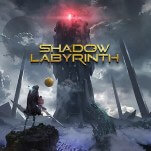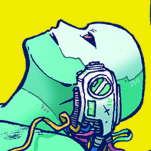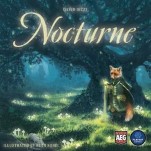Bō: Path of the Teal Lotus Is a Charming, Sometimes Messy, Love Letter

There’s a unique beauty to a love letter. Love is one of the remarkable symptoms of the human condition, yet each person’s recount of this feeling is wholly distinctive. Some may metaphorically describe an idyllic setting, time or place, while others will present the physical traits that accompany this sentiment. No two versions of love ever feel the same. A love letter then serves as a window not only into love itself, but how a particular individual feels it—what love is to them. We are able to glimpse an emotion completely familiar, yet entirely foreign. I think that is beautiful in its own right.
Calling Squid Shock Studios’ Bō: Path of the Teal Lotus anything less than a love letter does it a disservice. It’s a game that unabashedly wears its influences on its sleeve, pulling largely from the more modern ilk of Metroid-style games like Hollow Knight and Ori and the Blind Forest. Given the pedigree of talent at the studio, this makes sense: several team members were among those impacted by Nintendo’s DMCA takedown of a fan-remade Metroid II, chiefly Bō executive producer Milton Guasti, Another Metroid 2 Remake’s primary developer. Guasti’s talent was sought out for level design on Ori and the Will of the Wisps, bringing the history of the genre full circle to what Bō: Path of the Teal Lotus has on offer.
Players familiar to this style of game will immediately recognize its usual hallmarks. We control the titular Bō, a fox “tentaihana,” through a series of interconnected and diverse regions, everything from crimson bamboo forests to a bustling city inspired by Nara architecture. Through their journey, Bō obtains new skills or items that increase their strength and open new routes in the map. The focus is, as ever the case within this genre, on ability-enabled exploration that encourages backtracking.
Bō: Path of the Teal Lotus heavily emulates the formula found specifically in Hollow Knight—the inspiration is so striking that calling it a “clone” would not be a far stretch. Bō can equip charms (here dubbed “Omamori”) to provide perks that minimally alter the flow of gameplay, such as dealing more damage while at full health. Hollow Knight’s spells appear, retooled and expanded through the Daruma system— equipable dolls, each with their own unique effect. While pulling all of this inspiration, Bō never quite reaches the height of difficulty that Hollow Knight does. Whether through platforming sections, enemy design or boss fights, Bō is a much easier game, and this is a surprisingly welcome breath of fresh air. It provides a fair challenge while still remaining accessible to those not wishing to beat their head against their controller.

One of the high points comes in the form of its locomotion system, which pulls many pages from Ori and the Blind Forest. Bō uses a grapple mechanic to have players zip around levels, and it feels fun and fluid. There’s a heavy focus on staying airborne in combat, too. Maintaining an aerial combo allows Bō to enter the “Boiling State,” which amplifies Daruma spells and can synergize further with certain Omamori. It’s clear the game wants you to spend as little time on the ground as possible, and it rewards the player who takes to the sky. These mechanics form a sort of harmony with each other, and make for some truly exciting play.
It’s important to clarify what sets Bō: Path of the Teal Lotus apart from its inspirations, however—these are the distinctions that elevate it to this mythic love letter status. There’s no shortage of Metroid-style games specifically inspired by Hollow Knight (see Aestik, DEVIATOR, Constance, Phosfi, Mendacium, Crowsworn) and the memorability of many will bank on what innovations they make within the genre, or stand out for. The most stunning and memorable part of Bō: Path of the Teal Lotus, by far, is the art direction.
-

-

-

-

-

-

-

-

-

-

-

-

-

-

-

-

-

-

-

-

-

-

-

-

-

-

-

-

-

-

-

-

-

-

-

-

-

-

-

-









































